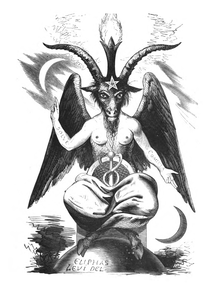Dogme et Rituel de la Haute Magie


Dogme et Rituel de la Haute Magie (English: Dogma and Ritual of High Magic) is the title of Éliphas Lévi's first published treatise on ritual magic, which appeared in two volumes between 1854 (Dogme) and 1856 (Rituel). The work is structured into 22 chapters, which parallel the Tarot.[1]
Lévi's Dogme et Rituel de la Haute Magie was translated into English by Arthur Edward Waite as Transcendental Magic, its Doctrine and Ritual (1896). Waite added a biographical preface and footnotes.
The work has recently attracted the attention of scholars for its views on the study of magic, religion and natural science. Lévi sees magic in between science and religion and believes it serves a potential conciliatory or mediating function between the two views.[2] Lévi rejects views, such as E. B. Taylor's, that magic or religion is inherently irrational and has been superseded by modern science. Instead he posits magic as an "esoteric science" and suggests that Hermeticism could be adapted to find the underlying truth behind all magical systems, calling for a "comparative magic." Levi thus posits a type of Perennialism buttressed by comparative theology and comparative religion, anticipating modern-day religious studies and paralleling contemporary comparative projects in anthropology and philology such as the work of Max Müller.[3]
Notes
Works Cited
- Josephson-Storm, Jason (2017). The Myth of Disenchantment: Magic, Modernity, and the Birth of the Human Sciences. Chicago: University of Chicago Press. ISBN 0-226-40336-X.
External links
- Online text in HTML at the Wayback Machine (archived September 19, 2008), PDF
- Haute Magie